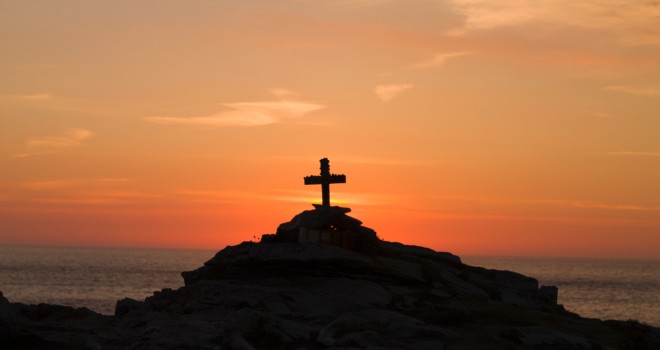To some, being Italian-American means overindulging in pasta and joking about tough guys. But being Italian means being heir to a rich tradition stretching back before the Caesars. Included are philosophers like Seneca, poets like Dante, artists such as Michelangelo, and saints like Francis of Assisi.
To some, being Catholic means giving up chocolate for Lent. But those who explore their Catholic heritage discover thousands of years of meaning, insight, and life-giving resources: inspiring stories about people from Abraham to Mother Teresa, practical instruction by some of the most brilliant thinkers of all time, tried and true spiritual practices that make people grow in character and happiness.
In John 10:10, Jesus said “I came that they may have life, and have it more abundantly.” That recalls Isaiah who, speaking of God’s people, says: “Lo, I will spread prosperity over her like a river, and the wealth of the nations like an overflowing torrent.” (Is 66:10-14, this Sunday’s first reading). The Catholic Church is all about preserving and enjoying the WHOLE, rich heritage of Christ. In fact, the word “Catholic” comes from the Greek word for “whole.” The problem is that some preserve outward practices of this heritage, like giving up something for Lent, but have lost the connection with the meaning and power of such customs and traditions.
Take for example the sign of the Cross. For some it is just a mechanical part of “logging on” and “logging off” of our time “connected” to God via prayer. For others, it seems no more than a superstitious good-luck charm to employ before stepping up to bat.
To see what it really means, we need to examine where it comes from. In baptism, a cross is traced on the foreheads of the baptized. The same occurs in confirmation, when the tracing is done with sacred oil called “chrism.” As the signing takes place, the name of the triune God is pronounced — Father, Son and Holy Spirit.
How far back in time does this practice go? Paul says “I bear the brand marks of Jesus in my body.” (Galatians 6:14-18, Sunday’s second reading). Notice that in the book of Revelation, those doomed to death have the mark of the beast on their brow while the 144,000 in white robes have been sealed on the forehead with the name of God and the Lamb (Revelation 7:3-4 and 11:1). Sounds a lot like the sign of the cross, doesn’t it?
In the early Church, the sign of the cross was seen as the brand mark on the body of a Christian that indicated that he or she was now the property of a new master and under the protection of that master. The blood of the lamb on the doorposts of the Israelites protected them from the Angel of Death who “passed over” their homes. The sign of the cross on the Christian says “hands off!” to the power of darkness. Note that Jesus says to his disciples “I have given you power to tread on snakes and scorpions and all the forces of the enemy, and nothing shall ever injure you” (Luke 10:19). The sign of the cross is the sign of this power.
But this sign means even more than belonging to the triune God. It indicates how and why we’ve come to belong to God and to be entitled to his protection. It means that for my standing with God, I do not trust in the good deeds that I’ve done or the “good person” that I am. Rather, I stake my claim to heaven on what Jesus did for me on Calvary. It means that I am saved by a pure gift of His love, by grace. “May I never boast of anything but the cross of our Lord Jesus Christ!” (Galatians 6:14).
Each time I make this sign, it is a renewal of my “decision for Christ,” my intimate relationship of love with the Father, Son, and Holy Spirit which comes as a pure gift of God’s grace through faith, baptism and confirmation. In this simple little sign is contained the very essence of the gospel.
The good news is that everything in the Catholic heritage is like this – full of rich meaning that we’ve forgotten. But not to worry — we can recover the meaning and reactivate the power. Let’s get busy exploring and unpacking the amazing Catholic tradition!












